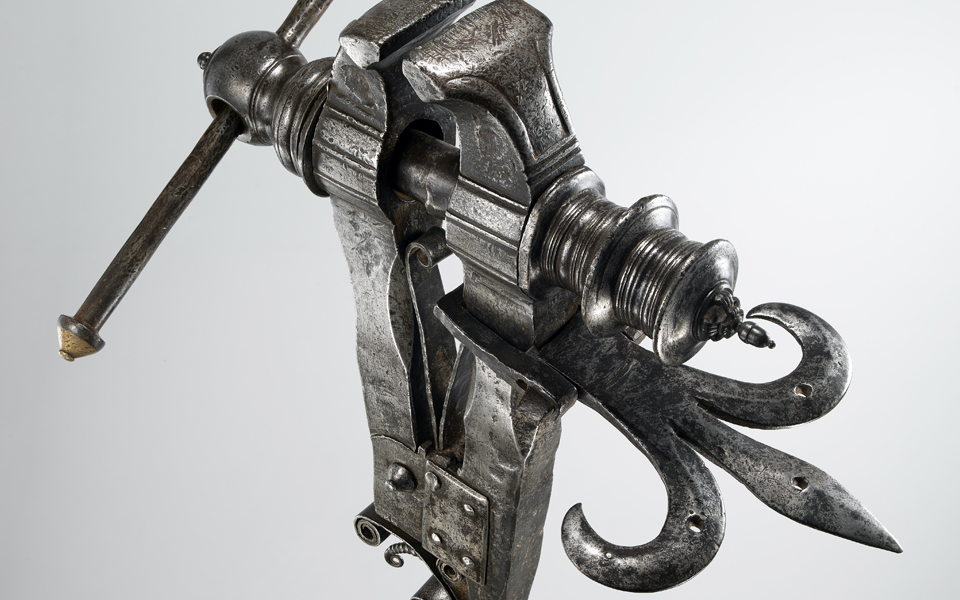
TOOLS – Beyond Hands Towards Beauty
Continuing with the successful publishing plan launched in 2007 with the volume LOCKS – SERRATURE, followed in due course by a second publication entitled DOORKNOCKERS – PICCHIOTTI DA PORTA, Alessandro and Fiorenzo Cesati were pleased to present in 2013 a new book whose focus is on tools, coming as the third of an ideal trio of books devoted to the fascinating world of works of art made of iron.
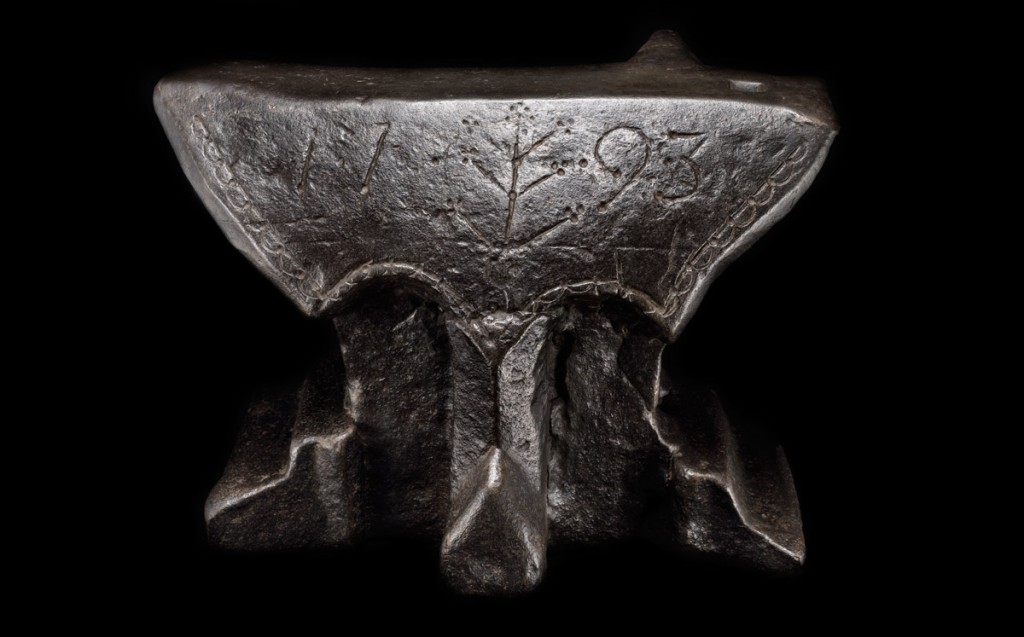
In our 21st century world of specialist technology, the pre-industrial past in which craftsmen worked with hand-tools has begun to recede into an era beyond living memory. Tools represent a tangible legacy of the past, since the use of tools formed an important step in the evolution of mankind. The collection of the Toolmakers’ art here gathered together is rare in both its breadth and quality, and many of these tools have considerable sculptural presence. They embody both technical precision and a simple beauty, and affirm the spirit of creativity which tools have always served. An elegance of design is combined with strength, the very qualities bound up in their substance, iron.
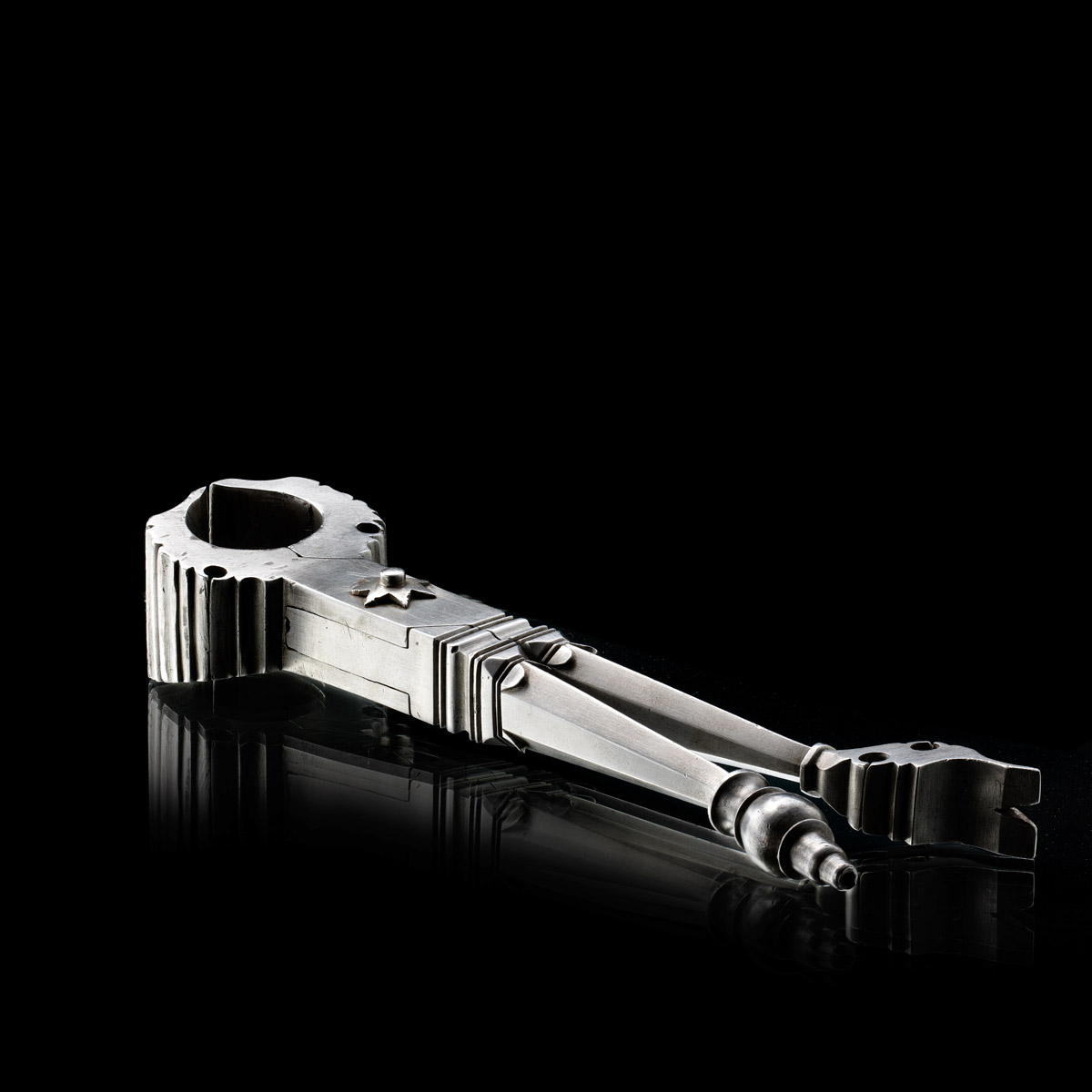
Iron was essential to make most of the tools and weapons which helped to create and fashion the pre-industrial worlds of the classical, medieval and Renaissance eras. It is an ancient material whose immense practical usefulness no doubt inspired the classical myth of Vulcan, the blacksmith-god who forged iron in his smithy, purported to be underneath Mount Etna. Iron glowing red, or white hot, has a plasticity that is in amazing contrast to its extreme hardness and rigidity when cold; when polished it becomes a lustrous grey. The blacksmith works the iron on an anvil and needs almost instantly to form the metal into shape during the brief period that it remains malleable.
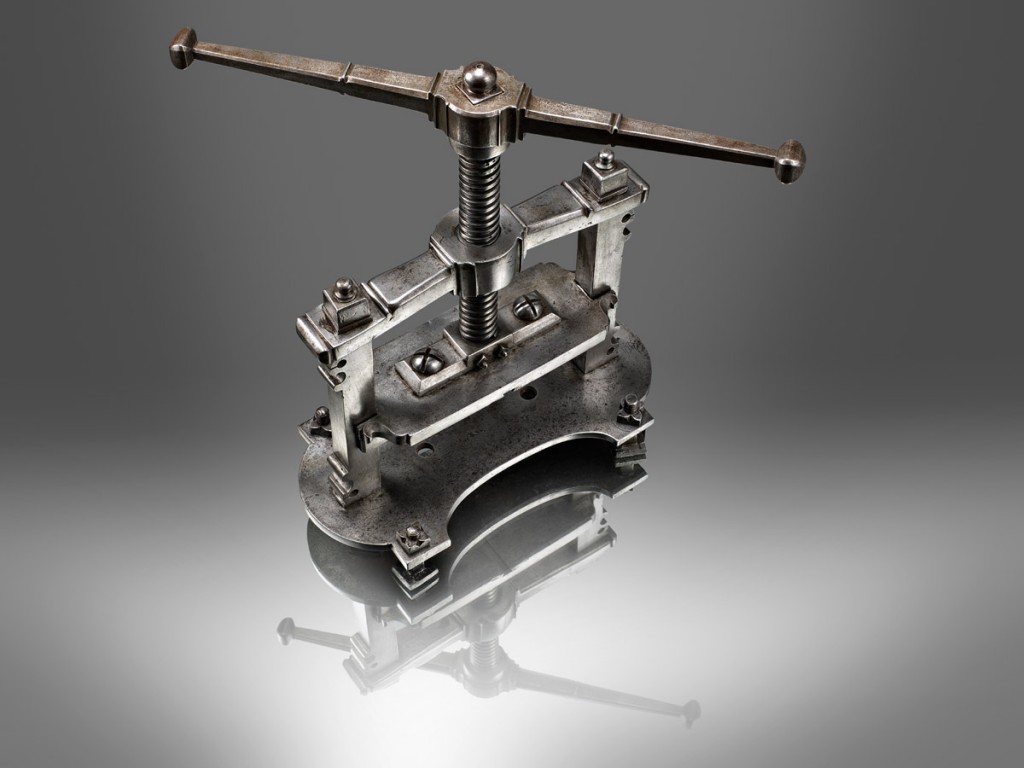
Tool collections are generally of two types. The first is made up of the tools actually used, and either kept or collected by craftsmen, the other consists of sometimes richly gilded and decorated tools, which were collected by notable princely patrons from the Renaissance onwards. Some of these princely collectors were themselves also skilled in tool-making, smithing and other crafts.
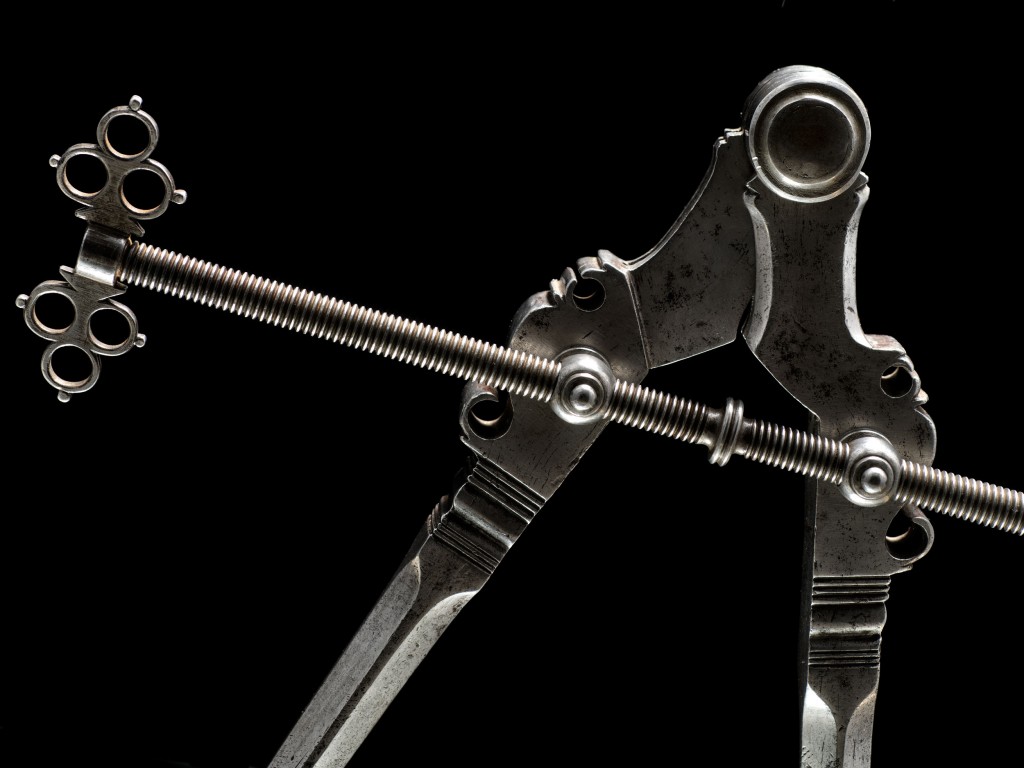
Notable figures have included the Elector of Saxony, Augustus I [1526-86] based in Dresden, Tsar Peter the Great of Russia [1672-1725], the Emperor Rudolf II [1552-1612], based in Prague, and King Louis XVI [1754-93] of France. Tsar Peter learned shipwrights’ techniques in Holland, the Emperor Rudolf formed one of the great Kunstkammer of Europe, which included scientific instruments, and Louis XVI was the last of several French kings who maintained their own workshops at Versailles, and was himself both a carpenter and a metalworker. Taught by the royal blacksmith François Gamain [1751- 95], the king made steel boxes, keys and padlocks as gifts for friends.
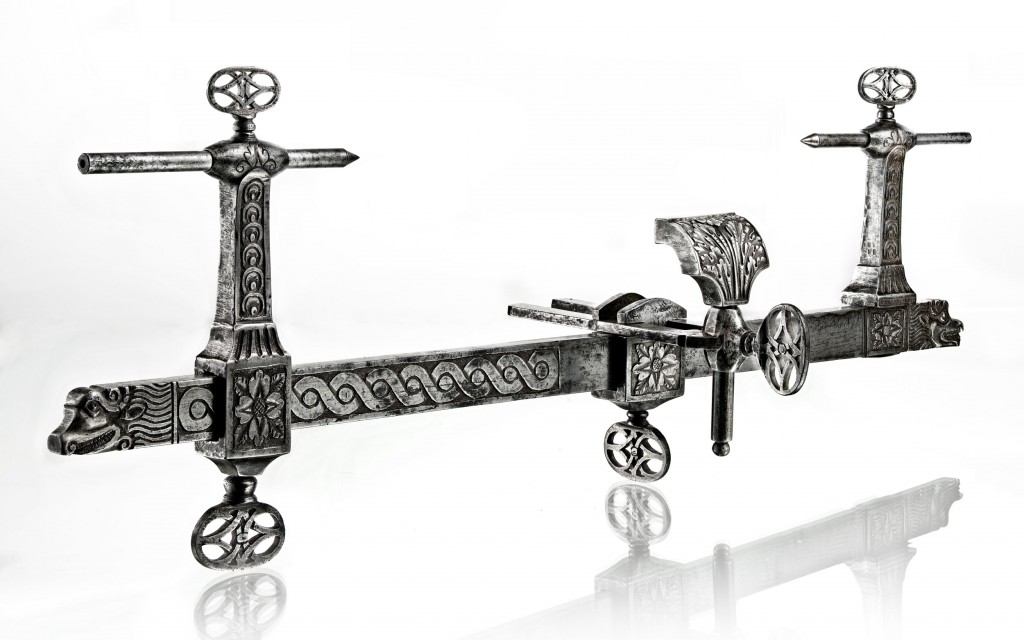
However, the earliest and most extraordinary collector was the Elector Augustus of Saxony, whose legendary Dresden Kunstkammer, still extant, included extensive collections of tools.
These numbered over seven thousand items by the date of the first inventory, made in 1587, with in addition over four hundred scientific instruments and watches. Augustus had extremely wide practical interests, and from the 1550s began collecting instruments for measuring distance and time, as well as horticultural implements.
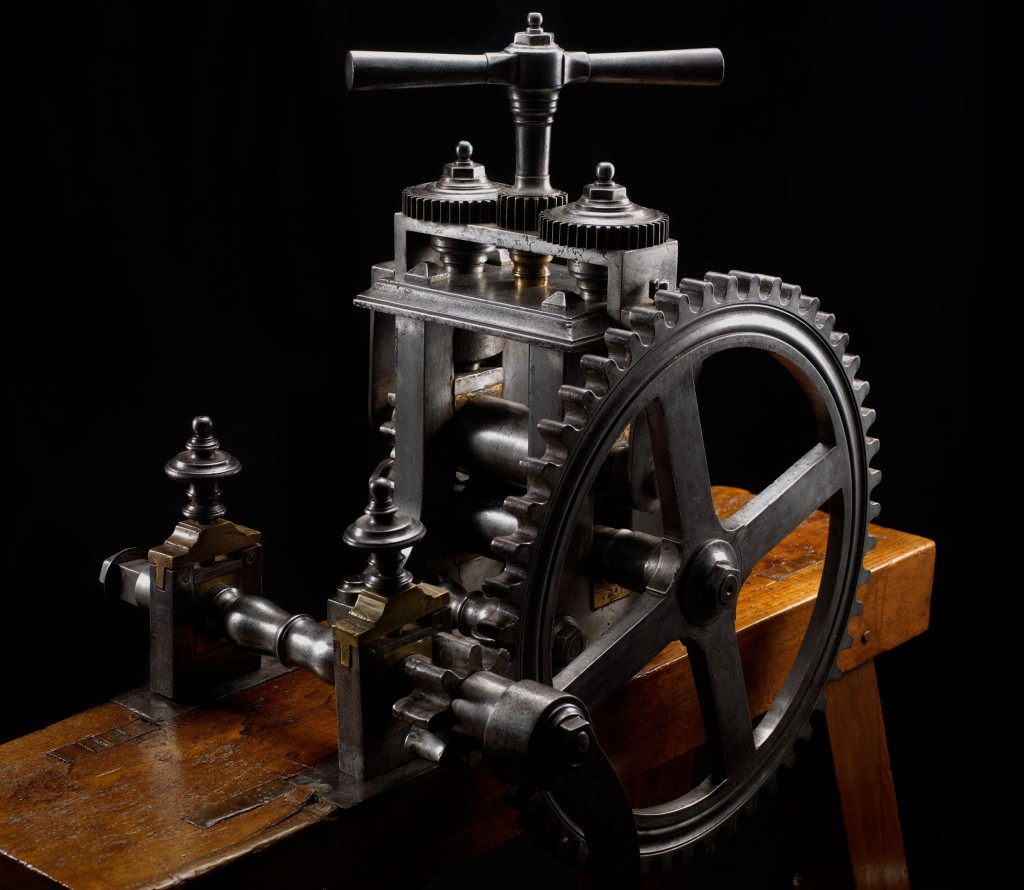
He enticed specialist craftsmen to his court, all of whom were expected to instruct the Elector in the practice of their skill. Notable amongst them were the Nuremberg-based Leonhard Danner, renowned inventor of tools. In 1558, Danner’s cousin, Paul Buchner, maker of cabinets and screws, became head toolmaker to the Dresden court, and later, Danner’s apprentice Balthasar Hacker was in 1576 appointed toolsmith and screw-maker at court.
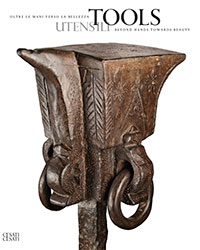
TOOLS – Beyond Hands Towards Beauty
Cesati&Cesati, Milan 2013
Limited edition of 500 copies
Cm 25×31 -104 four colours pages – hard cover with dust jacket
Bilingual edition Italian/English
ISBN : 978-88-902762-2-4
Essays by Marian Campbell, Honorary Senior Research Fellow of Victoria & Albert Museum in London and Alessandro Ubertazzi, Full Professor
of Industrial Design at the University of Florence
Art Direction by FG Confalonieri – Photographs by Roberto Bigano
€ 100 (shipping charges excluded) Order this book >
© 2013 – 2023 cesatiecesati.com | Please do not reproduce without our expressed written consent
Alessandro Cesati, Via San Giovanni sul Muro, 3 – 20121 Milano – P.IVA: IT06833070151